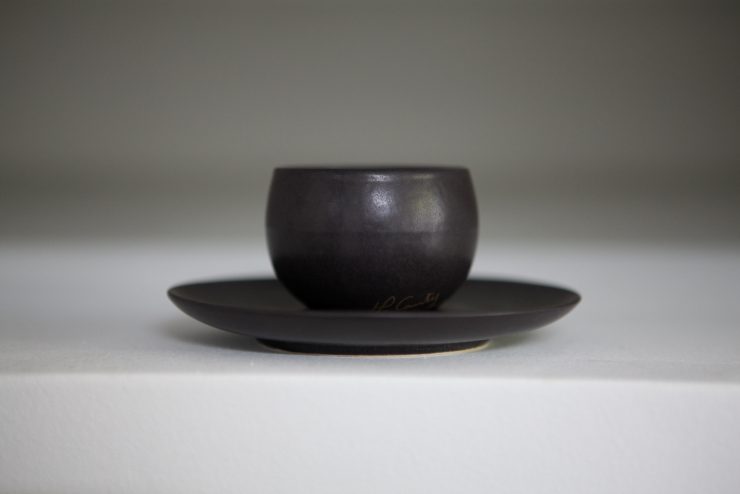
When someone asks you how your coffee is, do you think about the drink, or do you think about what you are drinking out of?
While most of us rarely give a second thought to what we’re drinking from, for the last year, Hippolyte Courty, founder of Parisian roasting company L’Arbre à Café, has devoted himself to exactly that, testing more than 400 different espresso cups in order to develop his own, the Révélation espresso cup.
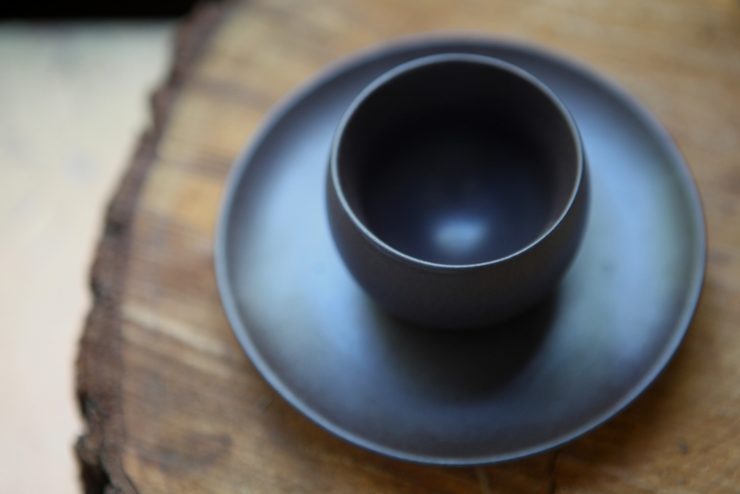
Since he is originally from the world of wine, it’s no surprise that Courty has so vehemently gone after developing a cup; what we drink out of has an influence on taste. This is something the wine world “has known for a long time,” says Courty. Drink a pinot noir out of a wine glass at the dinner table and then from a stainless steel tumbler on a picnic, and you’ll know what he is talking about. The coffee community has been slower to acknowledge this essential detail. While we focus a lot on what’s in our cup, too often we forget about the cup itself, and if we do focus on it, it’s usually for aesthetic reasons rather than taste.
But Courty is here to change that, not just for the French market, he hopes, but the international one as well. The Révélation cup was the winner of the Best Professional Coffee Equipment in the New Product of the Show Awards at the 2015 World of Coffee in Gothenburg, and with the cup having gone on sale to the public on October 1, he’s hoping to convince coffee professionals all over the world of the merits of the Révélation.
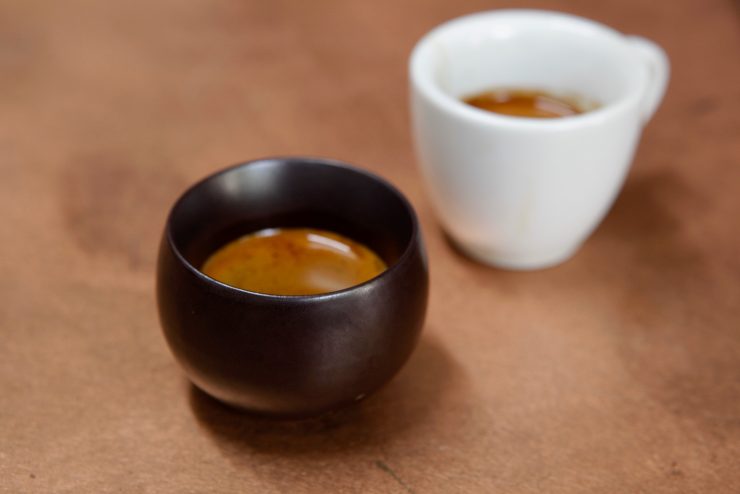
On a sunny Friday afternoon, Courty serves me up two espressos at the L’Arbre à Café roasting facility. One is in a classic white espresso mug, and the other in Courty’s new cup. I am trying to come to it with zero expectations, but I have already been told by a friend that the difference between the two is huge. I smell the two espressos, then taste. My friend is right. There is a completely different smell and taste coming out of each of them. “It’s amazing how different this one is,” I say, pointing to the Révélation. “Not just different,” says Courty. “Better.”
Coming up with a cup that is meant to serve an espresso in the best way possible has been no simple task. In fact, it’s a pretty technical one. Out of the 400 cups that Courty studied in working on the development of his own, he took about a dozen and put them in an x-ray machine, allowing him to analyze the insides, like the thickness of the rim and the base, and the curvature of the inside of the cup. All of this has an influence on what you drink.
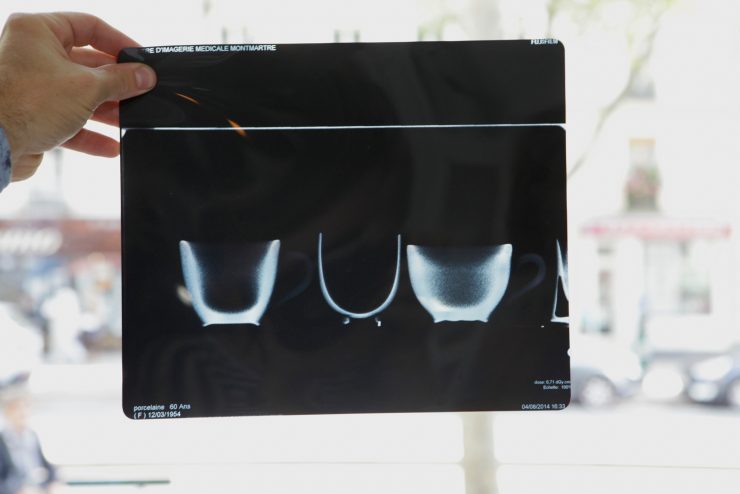
While we think of drinking coffee as an action of tasting, Courty points out that it’s one that activates all the senses. The Révélation espresso cup is designed with that in mind. A spherical shape made out of sandstone, it’s meant to be held, the tactile component as important as taste. In a way, that granular feel that you get from sandstone comes close to representing the grounds that go into the drink. “I wanted to touch the coffee,” says Courty.
The cup is meant to be easily lifted—it doesn’t have handles so you grasp around it, making it easier to lift—and when it touches the lips, it is barely noticeable. Our lips are “the last quality control before things go in the mouth,” explains Courty. As such, if your lips feel something heavy, your brain will tell you, “Hey, that’s going to taste heavy,” says Courty. “If it’s subtle, you don’t have the information,” says Courty—it’s just coffee, and your brain doesn’t have any expectations about what it’s about to taste. You taste with a clean slate, so to say.
For Courty, it’s all about making a drinking vessel that can better highlight what’s in the cup. “Espresso is the poor relation of coffee,” says Courty, noting that the drink can easily get a bad reputation. But his cup is intended to change that, put the value back into espresso. “It allows me to show that espresso can be really good,” adds Courty. That’s an important step for the people serving Courty’s coffees, many of which are offered in the French gastronomic scene. Soon you’ll be able to drink out of the Révélation espresso cup at some of Paris’s most well-known restaurants, like Frenchie and the triple-Michelin-starred Astrance.
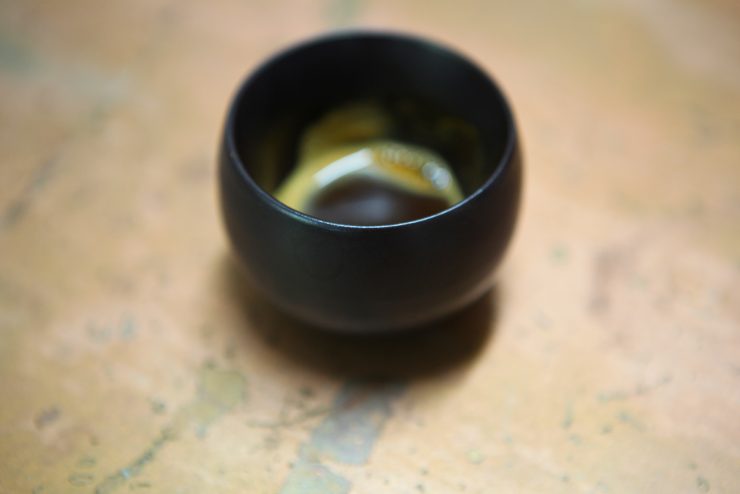
As one might expect from a cup of this quality, it isn’t made on the other side of the world. In fact, the Révélation is made in France by Montgolfier, a brand that supplies some of Paris’s hottest restaurants with plates, bowls, and beyond. That, added to all the time and energy put into developing the cup with design studio Sylvie Amar Studio, also well-steeped in the gastronomic world, makes the cup retail at €24. But Courty is convinced that, just like we are willing to pay a higher price for quality coffee, we’re ready to take it to the next level for our drinking vessels too. “We are ready to pay for the cup,” Courty says.
But while the cup is beautiful, and lovely to hold, ultimately it is designed to be forgotten—because it’s what’s inside that counts. It’s the subtle aspects of the cup that are, for Courty, the most important. Like a good restaurant experience, it’s the things that you don’t necessarily notice that make the difference: the level of the music, the weight of the cutlery, the feel of the tablecloth. When they’re bad, it’s immediately noticeable, and when they’re good, they’re just part of the overall ambience. With the Révélation cup, that’s the most essential part: elevating the tasting experience so the drinker is more focused on the ritual than what is in his or her hand. “It’s the moment, the gesture,” says Courty. “It’s the closeness [to coffee] that’s important.” And for that, we have his cup to thank.
Anna Brones (@annabrones) is a Sprudge.com staff writer based in Paris, the founder of Foodie Underground, and the co-author of Fika: The Art Of The Swedish Coffee Break, available now from Ten Speed Press. Read more Anna Brones on Sprudge.
The post Chic New Coffee Cups From Paris (Of Course) appeared first on Sprudge.

